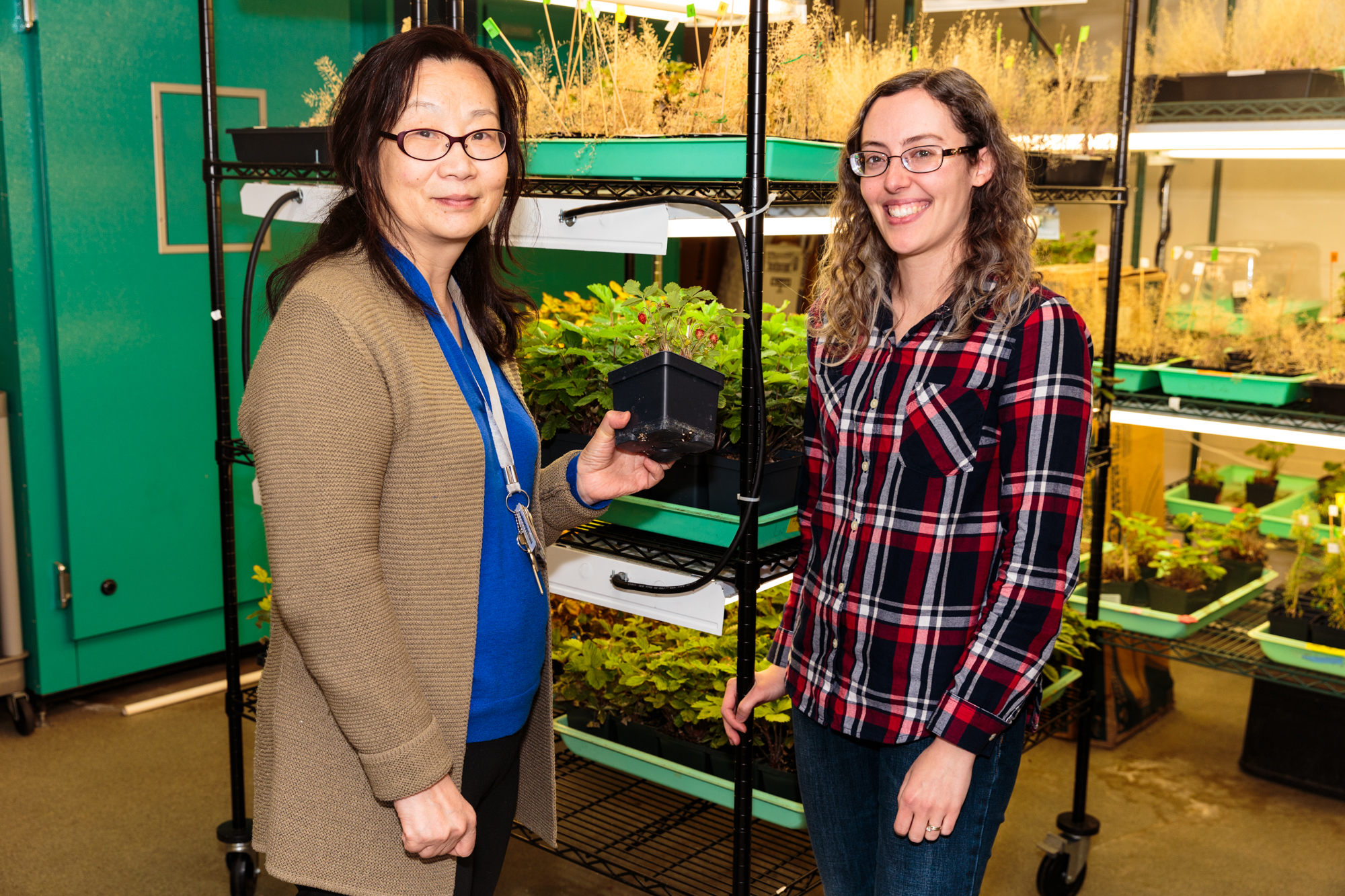University of Maryland researchers have identified a gene in strawberries that could greatly increase production of the fruit.
Julie Caruana, a postdoctoral researcher, found and isolated the gene under the direction of Zhongchi Liu, a professor in the Department of Cell Biology and Molecular Genetics.
There are two main ways to produce new strawberry plants, Caruana said. One way is through flowers and fruit, which make strawberry seeds. The other way is through asexual reproduction. The latter involves the strawberry plant making a runner, which is a long stem protruding from the parent plant that grows new plants at the end of the stem.
“Currently, the process of runner growth is really a black box. From a scientific perspective we don’t know how it works,” said Caruana, who has worked on this project for the past four years. “When we identified the gene it started to flesh out how this process works, which is a big breakthrough for us.”
[Read more: Early springs are great — unless you’re a tree, UMD study finds]
In 2014, strawberries made up a $3 billion agricultural industry in the United States alone, according to the Agricultural Marketing Resource Center.
To find this gene, Caruana treated strawberry seeds from a variety that does not normally produce runners with mutagen which creates changes in the genome. One of the resulting mutant plants produced a runner. She then compared the genome between the mutated strawberry that has a runner with the original in order to isolate the gene responsible.
Almost all strawberry plants grown in both large commercial farms and small home gardens are reproduced through runners instead of seeds, Liu said. Growing the plants through seeds is less ideal because they are hybrids, and therefore may not contain the desirable combination of genes. With runners, plants grown have an exact copy of the plant’s genes.
Finding and isolating the gene — which is a transcription factor, meaning the gene can be turned on or off — has the ability to switch on or off the runner behavior, Liu said. The gene itself is a runner repressor, meaning when it is activated it stops the creation of runners in the strawberry.
[Read more: “Coffee rust” is killing Latin American plants. A UMD professor is searching for a cure.]
Liu also said that most strawberry plants used for production are varieties that only produce berries once per year. There are other varieties that produce fruit year round, but it is unpopular in the production industry because they are poor runner producers, meaning they rarely create runners. With this gene, scientists could potentially induce runner creation within these varieties of strawberry, which would have major impacts on strawberry production and increase the overall yield of the fruit, Liu said.
“For right now, we just found the gene, but the next step is to manipulate it and then bring this finding to farmers,” said Liu, who has worked at this university since 1995. “Existing technology to manipulate genes exists, but without knowing the gene, we weren’t able to do this before.”
This project exists due to a grant from the USDA that started in 2016, which gives the lab $450,000 for three years, Liu said.
While Caruana is ending her postdoctoral research soon, John Sittmann, a doctoral student studying molecular and cell biology at this university, will take over the research.
“What makes this unique is you don’t have to worry about bees or other pollinators for plants, since no seeds are involved,” Sittmann said. “The more we know about the molecular underpinnings of strawberries and what’s impacting these genetic interactions, the better odds of developing a greater food stock are.”



